 Last additions Last additions |
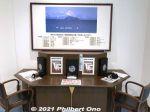
CD listening station where you can listen to numerous cover versions of the song by famous artists.Jan 12, 2022
|
|
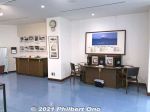
Jan 12, 2022
|
|
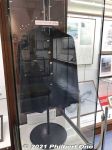
Uniform of the Dai-sanko college where Oguchi Taro studied.Jan 12, 2022
|
|
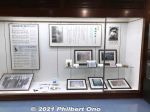
Exhibit for Yoshida Chiaki, credited for composing the original melody.Jan 12, 2022
|
|

Exhibit for Oguchi Taro who composed the song.Jan 12, 2022
|
|
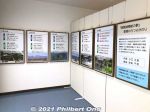
Song lyrics for all six verses.Jan 12, 2022
|
|
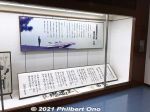
About the song lyrics.Jan 12, 2022
|
|
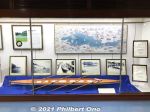
The accurate scale model of a fixed-seat boat is also displayed.Jan 12, 2022
|
|
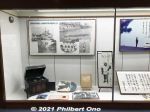
Photos of Imazu in 1917.Jan 12, 2022
|
|
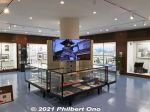
It seems all or almost all the exhibits in the old museum have been moved to this new space.Jan 12, 2022
|
|
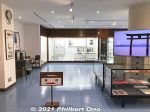
The museum has only one room in a square layout with glass cases and exhibits. The middle has a small showcase as well.Jan 12, 2022
|
|
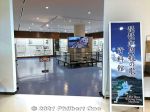
The new museum occupies a large corner of the building's first floor. It's on the left when you enter the building.Jan 12, 2022
|
|
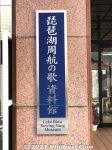
The museum sign includes English! Official English name is "Lake Biwa Rowing Song Museum."Jan 12, 2022
|
|

The Imazu-Higashi Community Center (今津東コミュニティセンター) is across from the Imazu Shimin Kaikan concert hall. Jan 12, 2022
|
|

The new Biwako Shuko no Uta Shiryokan (Lake Biwa Rowing Song) song museum is now in this building since April 1, 2020. This is the Imazu-Higashi Community Center (今津東コミュニティセンター).Jan 12, 2022
|
|
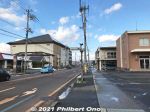
If you are walking from Omi-Imazu Station on the main road, turn left.Jan 12, 2022
|
|

If you are walking from Omi-Imazu Station, you can see this large sign on the side of the old song museum showing the way to the relocated song museum.Jan 12, 2022
|
|
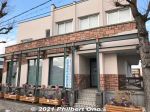
The main road also has this old Biwako Shuko no Uta Shiryokan (Lake Biwa Rowing Song) song museum which has closed. It moved to another building nearby.Jan 12, 2022
|
|
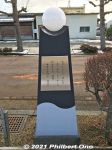
On the main road between Imazu Port and Omi-Imazu Station are sidewalk lights engraved with song lyrics. This has Verse 3 which mentions Imazu.Jan 12, 2022
|
|
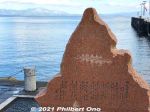
Oguchi Taro was a member of the rowing club at Dai-san High School (now Kyoto University). He composed it in Imazu, Shiga Prefecture during the second night of the trip.Jan 12, 2022
|
|
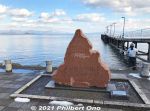
Biwako Shuko no Uta song monument at Imazu Port. In June 1917, a song called Biwako Shuko no Uta (Lake Biwa Rowing Song) was composed by college student Taro Oguchi during a boat rowing trip around Lake Biwa.Jan 12, 2022
|
|
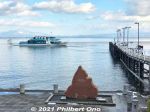
Imazu Port also has this song monument for Biwako Shuko no Uta (Lake Biwa Rowing Song). 琵琶湖周航の歌 歌碑The song is about college boys from Kyoto rowing around Lake Biwa while mentioning famous places like Otsu (the starting point), Omi-Maiko (Omatsu), Imazu, Chikubushima, Nagahama, and Chomeiji.Jan 12, 2022
|
|

The new Imazu Port, opened in March 2020. Completely rebuilt.Jan 12, 2022
|
|
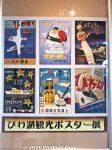
Old tourist PR posters for Lake Biwa. Great design. They don't make them like that anymore.Jan 12, 2022
|
|
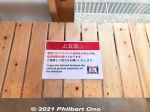
Social distancing on benches, but bad English. よい子のみなさん、この英語はダメですよ。無視してください。Jan 12, 2022
|
|
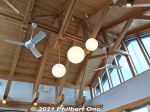
Ceiling.Jan 12, 2022
|
|
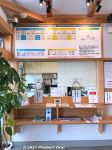
Boat ticket office operated by Biwako Kisen.Jan 12, 2022
|
|
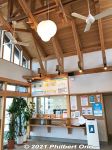
Boat ticket office.Jan 12, 2022
|
|
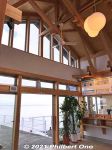
Imazu Port building is made of wood from Shiga.Jan 12, 2022
|
|
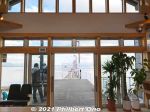
Imazu Port's gate to the boat dock.Jan 12, 2022
|
|
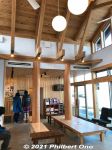
Waiting room inside Imazu Port building.Jan 12, 2022
|
|

Rear view of Imazu Port building. Rebuilt and opened on March 22, 2020.Jan 12, 2022
|
|
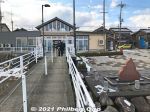
Heading to the new Imazu Port building. On the right is the Biwako Shuko no Uta (Lake Biwa Rowing Song) song monument.Jan 12, 2022
|
|
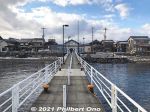
Imazu Port dock to the port building.Jan 12, 2022
|
|
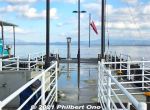
At the end of Imazu Port's dock, the lantern is a song monument for Verse 3 of Biwako Shuko no Uta (Lake Biwa Rowing Song).Jan 12, 2022
|
|
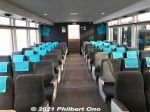
Inside Interlaken. The boat also has an outside deck.Jan 12, 2022
|
|

Inside Interlaken. Jan 12, 2022
|
|

"Interlaken" cruise boat at Imazu Port.Jan 12, 2022
|
|
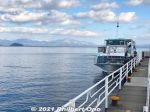
"Interlaken" cruise boat at Imazu Port with Chikubushima and Mt. Ibuki in the background.Jan 12, 2022
|
|
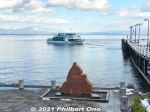
You can also get to Imazu by boat from Chikubushima island. Imazu Port has boats going to/from Chikubushima. On the eastern shore, Nagahama and Hikone have boats going to Chikubushima.At Imazu Port, boat named "Interlaken" operated by Biwako Kisen cruises to/from Chikubushima.Jan 12, 2022
|
|
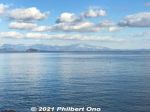
From Imazu Port, Chikubushima island and Mt. Ibuki can be seen across the lake.Jan 12, 2022
|
|
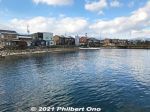
Near Imazu Port.Jan 12, 2022
|
|
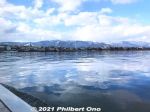
This is Imazu as the boat approaches Imazu Port. Small, quiet town anchoring the northwestern part of the lake. Tourist base for exploring this part of Shiga and the lake.Jan 12, 2022
|
|
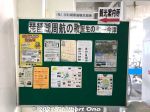
"Birthplace of Biwako Shuko no Uta" (Lake Bwa Rowing Song) on a bulletin board in the train station.Jan 12, 2022
|
|
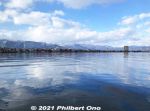
You can therefore traverse northern Lake Biwa between Nagahama/Hikone and Imazu via Chikubushima. Approaching Imazu by boat.Jan 12, 2022
|
|
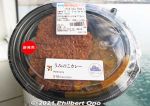
In late Jan. 2021, Uminoko Curry was sold by 7-11 only in Shiga for three weeks. It used the same recipe as the curry served on the Uminoko Floating School.Jan 11, 2022
|
|

Uminoko Curry had pork cutlet, rice, and somewhat sweet, mild curry.Jan 11, 2022
|
|

Mt. Kanakuso-dake (金糞岳 or Azai-dake) behind Takatsuki in Nagahama. The peak to the left is Shirakura-dake (白倉岳). The orange/white smokestack is from the Nippon Electric Glass factory (日本電気硝子) in Takatsuki. Jan 11, 2022
|
|

According to legend, Mt. Ibuki and Mt. Azai-dake (Kanakuso-dake) in northern Shiga argued over who was the highest in Shiga. Mt. Ibuki got so upset by the argument that he drew a sword and sliced off Azai-dake's head.The sliced-off peak fell into Lake Biwa and became Chikubushima. Read the full folktale here: https://shiga-ken.com/blog/2014/07/the-birth-of-chikubushima/Jan 11, 2022
|
|

Mt. Kanakuso-dake (金糞岳 or Azai-dake) overlooks Takatsuki in Nagahama. Kanakuso-dake is indeed Shiga's second highest mountain (1,317 m). Part of Yamamoto-yama (dark green) can be seen on the left in the foreground. Jan 11, 2022
|
|

From Imazu Port, it's a short walk to JR Omi-Imazu Station to catch the JR Kosei Line (湖西線) to Kyoto.Jan 10, 2022
|
|
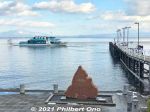
At Imazu Port is another monument for Biwako Shuko no Uta (Lake Biwa Rowing Song). Interlaken also leaves for Chikubushima.Jan 10, 2022
|
|
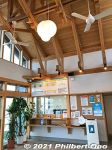
Inside the new Imazu Port building. That's the ticket office.Jan 10, 2022
|
|
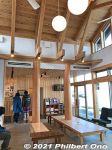
Inside the new Imazu Port building made of wood. Waiting room.Jan 10, 2022
|
|
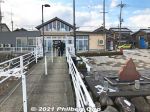
Walking to Imazu Port on the boat dock. New Imazu Port building.Jan 10, 2022
|
|
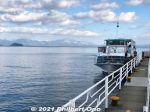
Imazu Port with Chikubushima and Mt. Ibuki in the background.Jan 10, 2022
|
|

Interlaken at Imazu Port.Jan 10, 2022
|
|

Approaching Imazu in winter.Jan 10, 2022
|
|
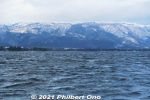
Jan 10, 2022
|
|

On the mountain top is Biwako Hakodateyama ski grounds near Imazu. びわこ箱館山Jan 10, 2022
|
|

Chikubushima's west side.Jan 10, 2022
|
|

Leaving Chikubushima.Jan 10, 2022
|
|

Jan 10, 2022
|
|

Inside the Interlaken boat. Very comfortable and looks new.Jan 10, 2022
|
|
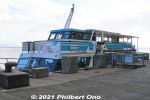
"Interlaken" boat to Imazu at Chikubushima.Jan 10, 2022
|
|
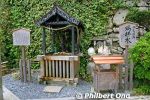
Zuisho-sui Well 瑞祥水Jan 10, 2022
|
|
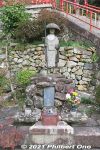
Jan 10, 2022
|
|
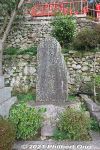
Jan 10, 2022
|
|
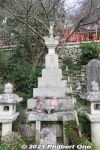
Jan 10, 2022
|
|
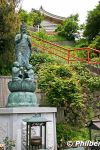
Kannon statue on Chikubushima.Jan 10, 2022
|
|
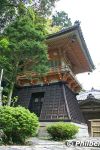
Bell towerJan 10, 2022
|
|
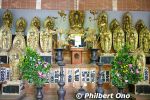
Hall of 33 Kannon Statues. 三十三所奉安所Jan 10, 2022
|
|
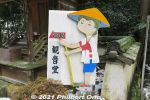
From Benten-do, way to Kannon-do (down the steps).Jan 10, 2022
|
|
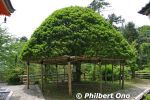
Mochinoko Tree もちの木Jan 10, 2022
|
|
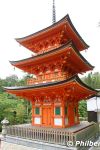
Three-Story Pagoda. Reconstructed in 2000. The original pagoda was destroyed by fire caused by lightning during the early Edo Period. It took six years to complete.Jan 10, 2022
|
|
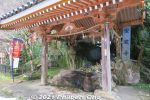
Wash basinJan 10, 2022
|
|
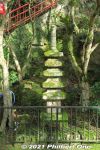
Five-story Stone Pagoda 五重石塔. Important Cultural PropertyJan 10, 2022
|
|
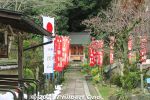
Sanryudo Shrine right next to Benzaiten-do. Worships the dragon god or the god of water. 三龍堂Jan 10, 2022
|
|
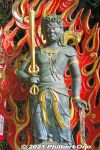
Fudō Myōō (Acala) on Chikubushima. 不動明王Jan 10, 2022
|
|
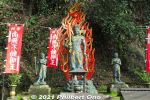
In front of Benzaiten-do is Fudō Myōō 不動明王Jan 10, 2022
|
|
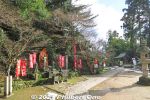
Jan 10, 2022
|
|
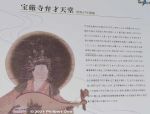
About Benzaiten-do Hall.Jan 10, 2022
|
|
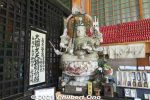
Another statue of Benzaiten.Jan 10, 2022
|
|
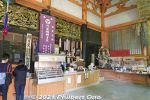
Right corner of Benzaiten-do.Jan 10, 2022
|
|
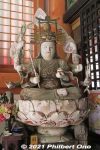
Inside Benzai Tendo. The statue of Benzaiten in the corner was donated by the father of Lord Azai Nagamasa. The Nagamasa clan paid their respects to it regularly thereafter.Jan 10, 2022
|
|
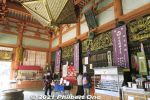
Jan 10, 2022
|
|
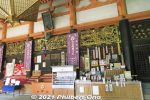
Inside Benzaiten-do Hall which houses one of Japan's three major statues of the Goddess Benzaiten.Jan 10, 2022
|
|
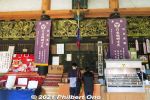
Inside Benzaiten-do Hall. Many famous samurai, such as Oda Nobunaga and the Azai Clan, worshipped at Chikubushima since they believed Benzaiten had the power to destroy their enemies.Jan 10, 2022
|
|

Benzaiten-do Hall, Hogonji's Hondo main worship hall. Hogonji Temple belongs to the Shingon Buddhist Sect (Buzan School). Benzaiten is the goddess of everything that flows: Water, rivers, music, etc. 弁才天堂Jan 10, 2022
|
|
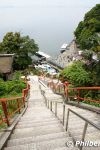
Steps between the Karamon Gate and Benzaiten-do.Jan 10, 2022
|
|
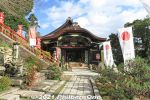
Jan 10, 2022
|
|
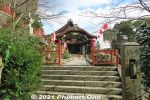
Path to Karamon Gate.Jan 10, 2022
|
|
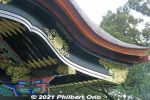
Jan 10, 2022
|
|
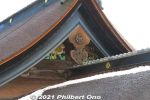
A pair of tigers on the main roof.Jan 10, 2022
|
|
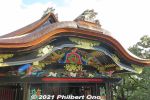
Jan 10, 2022
|
|
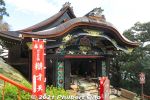
Jan 10, 2022
|
|
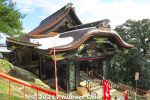
The roof was also rethatched with new cypress bark. The last time the building was reroofed was in 1972. (The white patch is snow.)Jan 10, 2022
|
|
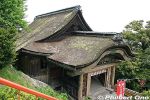
Before the renovation, Kannon-do and Karamon Gate had this old, moldy roof.Jan 10, 2022
|
|

Jan 10, 2022
|
|
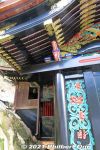
Jan 10, 2022
|
|
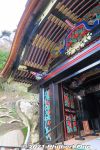
Left side of Karamon Gate. The gate doors are also adorned with peony flower carvings.Jan 10, 2022
|
|
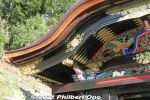
Jan 10, 2022
|
|
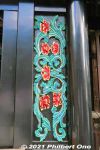
Right door of Karamon Gate.Jan 10, 2022
|
|
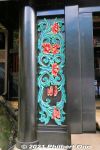
Left door of Karamon Gate.Jan 10, 2022
|
|
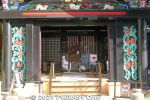
Karamon Gate entrance to Kannon-do Hall.Jan 10, 2022
|
|
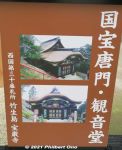
What the Karamon looks like with the doors closed.Jan 10, 2022
|
|
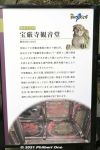
About the Kannon-do Hall.Jan 10, 2022
|
|
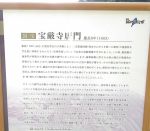
The gate and other castle structures were later moved to warlord Toyotomi Hideyoshi's mausoleum in Kyoto in 1600. In 1603, Hideyoshi's son ordered Karamon Gate to be moved to Chikubushima to help rebuild Hogonji Temple which was in disrepair at Chikubushima had close ties to Toyotomi Hideyoshi since he was once the lord of Nagahama Castle. Chikubushima was part of his domain. Jan 10, 2022
|
|
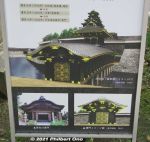
Karamon Gate was originally built in 1596 as the gate for a covered wooden bridge named Gokuraku-bashi (極楽橋) at Osaka Castle as depicted here.Jan 10, 2022
|
|
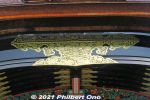
Center metal fitting on the Karamon.Jan 10, 2022
|
|
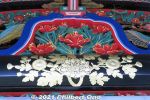
The only damper on this stupendous work is that, the contractor who did the job and the local government employee in charge of the project were found to have colluded to rig the bidding process. The project's budget was leaked to the contractor before the bidding started. Both parties were arrested a few months after the job was completed. At least the police waited until the job was done before arresting them. Jan 10, 2022
|
|
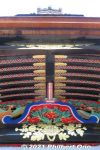
It's really pleasing to see this and other major National Treasures being restored during the past 10 years. There's also Nikko Toshogu Shrine in Tochigi and Menuma Shodenzan Temple in Saitama which have been refreshed with vibrant colors and laWith modern technologies, computers, laser measurements, and scientific techniques, restoration specialists can more accurately assess and reproduce the original colors and pigments. But much of the work is done by hand.Jan 10, 2022
|
|
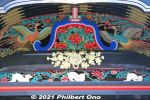
Never noticed those white rabbits before...Jan 10, 2022
|
|
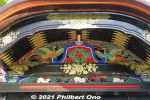
Some of the wood carvings had pieces that broke off or worn out. So they were reconstructed too. The metal fittings were also re-plated or remade.Jan 10, 2022
|
|

Before photo. Without the colors, it was so hard to see the wood carvings.Jan 10, 2022
|
|
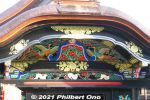
The roof was also entirely restored. The gate is a splendid example of the finest art from the Momoyama Period (late 16th century).Jan 10, 2022
|
|
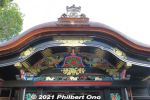
It's the entrance of the temple's Kannon-do Hall that worships Kannon. The gate features the karahafu roof gable shaped like a hump, commonly found on important traditional buildings such as temples and castles.Jan 10, 2022
|
|
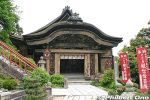
Karamon Gate before the restoration. Very drab-looking with most of the paint and lacquer weathered away by the elements after 67 years when it was last repainted.Jan 10, 2022
|
|
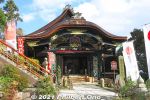
It looks new because it was magnificently restored (including the roof) after six years of meticulous work completed in March 2020. Finally came to see it. I was not disappointed. It's jaw-dropping beautiful.Jan 10, 2022
|
|
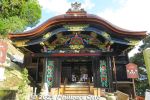
Karamon Gate looks new, but it's actually over 400 years old. "Karamon" (唐門) is a generic term for Chinese-style gates.There are other Karamon Gates in Japan, namely the more elaborate one at Nishi Hongwanji Temple in Kyoto. Karamon have colorful and intricate wood carvings and decorative features.Jan 10, 2022
|
|
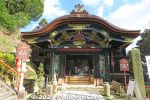
Karamon Gate 唐門 (National Treasure) beautifully restored to its original splendor. Entrance to the Kannondo Temple.This gate is said to have come from Toyotomi Hideyoshi's Gokuraku Bridge at Osaka Castle in the early 17th century (Momoyama Period). Chikubushima, Nagahama, Shiga.Jan 10, 2022
|
|

Karamon Gate 唐門 (National Treasure) before it was restored in March 2020. See the next photo.Jan 10, 2022
|
|
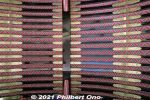
Ceiling inside Karamon Gate, looking directly upward. Jan 10, 2022
|
|
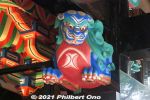
One of the lion dogs on Karamon Gate. It's part of a wooden protrusion called the "kibana" (木鼻). Jan 10, 2022
|
|
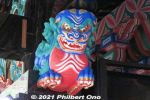
One of the lion dogs on Karamon Gate. Brought back to life from a drab-looking brown. It's part of a wooden protrusion called the "kibana" (木鼻). Jan 10, 2022
|
|
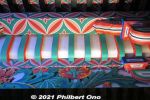
Jan 10, 2022
|
|
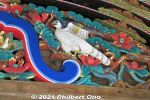
Right side of the kaeru-mata.Jan 10, 2022
|
|
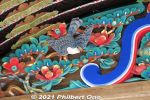
Left side of the kaeru-mata.Jan 10, 2022
|
|
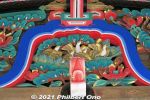
Closeup of the "kaeru-mata" showing a nest of birds. (蟇股).Jan 10, 2022
|
|
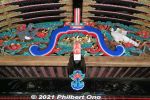
Nest of birds in this decorative, hump-shaped wood support called "kaeru-mata" (蟇股). Commonly found on entrances of important buildings. In Nikko, Toshogu Shrine's famous "Sleeping Cat" carving is also a kaeru-mata.Jan 10, 2022
|
|
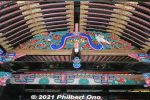
Front of Karamon Gate.Jan 10, 2022
|
|
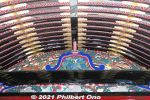
Behind the Karamon Gate.Jan 10, 2022
|
|
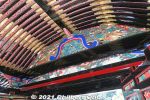
Behind the Karamon Gate.Jan 10, 2022
|
|
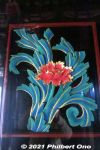
Jan 10, 2022
|
|
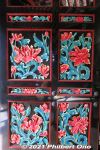
Karamon Gate door.Jan 10, 2022
|
|
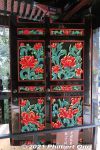
Karamon Gate door.Jan 10, 2022
|
|
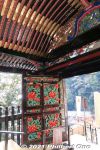
Karamon Gate door.Jan 10, 2022
|
|
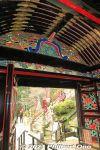
Inside Karamon Gate. Just gorgeous. Too bad most people just walk in without looking back and noticing. Jan 10, 2022
|
|
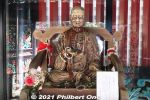
Worn statue of Pindola Bharadvaja (賓頭盧尊者). Jan 10, 2022
|
|
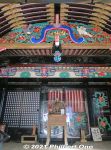
Pindola Bharadvaja statue right inside Karamon Gate.Jan 10, 2022
|
|
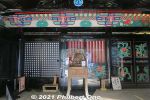
After photo of Pindola Bharadvaja statue. These days, best not to touch unless you use hand sanitizer afterward.All those old pilgrim name stickers (mostly from the Edo Period when it was fad) were removed for a new layer of lacquer.Jan 10, 2022
|
|
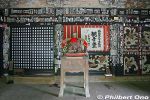
Before photo of a very old and worn statue of Pindola Bharadvaja (賓頭盧尊者). Traditionally, you touch his body part corresponding to the part of your body you want to heal. Notice the pillars and ceiling beams which were plastered with pilgrim name stickers called "senjafuda" (千社札). They bear the ardent pilgrim's name and pilgrims stuck their name stickers on the temples they visited to indicate "I wuz here!" Jan 10, 2022
|
|
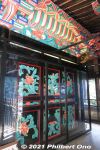
After photo of the restored wall flowers near the statue of Pindola Bharadvaja.Jan 10, 2022
|
|
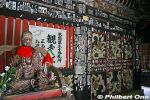
Before photo of the statue of Pindola Bharadvaja and the nearby wall with flower carvings. (See the next photo after the restoration.)Jan 10, 2022
|
|
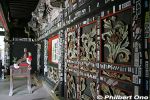
Before photo of the statue of Pindola Bharadvaja and the nearby wall with flower carvings.Jan 10, 2022
|
|
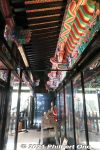
Heading toward the statue of Pindola Bharadvaja. The carved walls are now protected with plexiglass.Jan 10, 2022
|
|
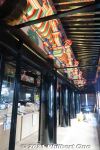
Jan 10, 2022
|
|
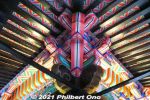
Kannon-do Hall roof corner with a tokyo assemblage. So much eye candy in this building. Jan 10, 2022
|
|
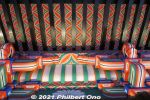
Jan 10, 2022
|
|
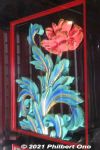
Jan 10, 2022
|
|

Corridor in front of the altar.Jan 10, 2022
|
|
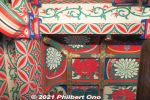
Jan 10, 2022
|
|
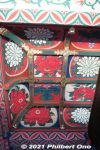
Jan 10, 2022
|
|
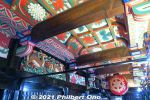
Kannon-do ceiling and transom carvings. Absolutely brilliant colors.Jan 10, 2022
|
|
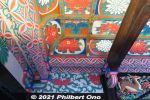
Jan 10, 2022
|
|
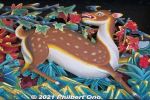
Jan 10, 2022
|
|
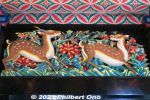
Jan 10, 2022
|
|
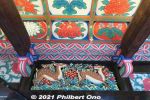
Kannon-do ceiling and transom deer carvings.Jan 10, 2022
|
|
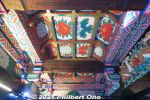
Jan 10, 2022
|
|
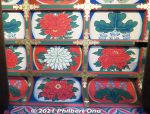
Kannon-do ceiling of painted flowers. Peonies (red), chrysanthemum (white), and paulownia (blue). 牡丹、菊、桐 Jan 10, 2022
|
|
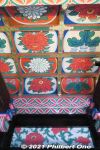
Jan 10, 2022
|
|
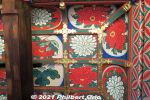
Kannon-do ceiling of painted flowers. Peonies (red), chrysanthemum (white), and paulownia (blue). 牡丹、菊、桐Jan 10, 2022
|
|
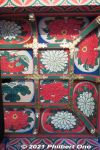
Ceiling paintings of flowers.Jan 10, 2022
|
|
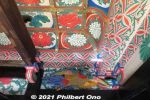
Kannon-do ceiling and transom carvings.Jan 10, 2022
|
|
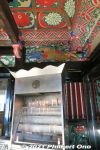
Candle holder.Jan 10, 2022
|
|
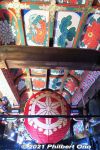
Jan 10, 2022
|
|
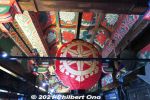
Jan 10, 2022
|
|
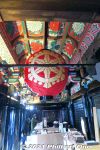
Ceiling in front of the altar includes a red paper lantern.Jan 10, 2022
|
|

In front of the main altar of Kannon-do. The hall worships a thousand-arm Kannon statue (hidden from the public).Jan 10, 2022
|
|
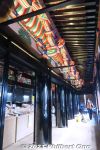
Above the pillars are decorative wooden support assemblages called tokyo (枓栱) or dougong. They have also been brilliantly repainted and even lit up. Dougong are interlocking wood pieces commonly found on temples and shrines as a Chinese influence.Jan 10, 2022
|
|
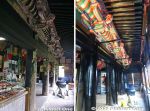
Before-and-after photos of the corridor in front of the altar. The wooden pillars that used to be covered with pilgrim name stickers are now all gone. Pillars totally re-lacquered. 観音堂Jan 10, 2022
|
|
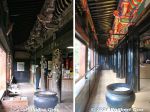
Before-and-after photos of the corridor in front of the altar. The wooden pillars that used to be covered with pilgrim name stickers are now all gone. Pillars totally re-lacquered. 観音堂Jan 10, 2022
|
|
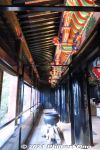
Corridor and incense burner in front of the altar. The wooden pillars totally re-lacquered.Jan 10, 2022
|
|
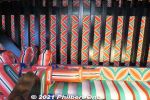
Jan 10, 2022
|
|

Jan 10, 2022
|
|
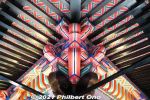
Jan 10, 2022
|
|
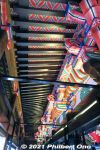
Decorative wooden support assemblages called tokyo (枓栱) or dougong. They are now illuminated to show off the vibrant colors.Jan 10, 2022
|
|
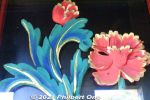
Jan 10, 2022
|
|
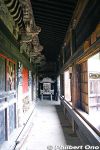
Corridor facing the Funa-roka before the restoration. Everything was drab looking. After the restoration, the windows on the right are now kept closed.Jan 10, 2022
|
|
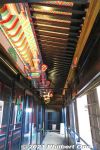
Corridor facing the Funa-roka.Jan 10, 2022
|
|
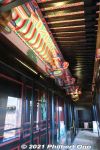
Corridor facing the Funa-roka.Jan 10, 2022
|
|
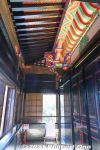
Corridor facing the Funa-roka.Jan 10, 2022
|
|
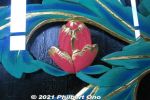
Jan 10, 2022
|
|
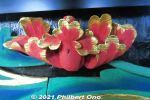
Jan 10, 2022
|
|
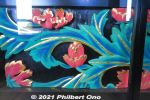
Jan 10, 2022
|
|
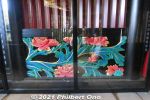
Kannondo Temple has been beautifully renovated with its many intricate wood carvings and paintings on walls, doors, and ceilings restored in March 2020. 観音堂Jan 10, 2022
|
|
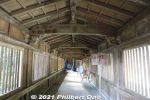
Funa-roka boat corridor goes to Kannon-do Hall. 船廊下Jan 10, 2022
|
|
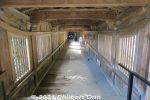
Funa-roka boat corridor connects Tsukubusuma Shrine and the Kannon-do Hall. Important Cultural Property. From the Momoyama Period. 船廊下Jan 10, 2022
|
|
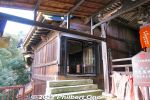
Next to Tsukubusuma Shrine is this entrance to the Funa-roka corridor.Jan 10, 2022
|
|

Jan 10, 2022
|
|
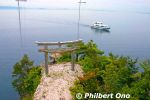
Hogonji's Shinto shrine has this iconic torii facing the lake. You can buy small clay dishes to throw at the torii. If your dish goes through the torii, your wish will come through. However, most dishes never make it through the torii. They litter the ground.Jan 10, 2022
|
|
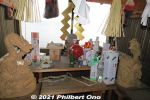
Shrine for the Chikubushima Dragon God.Jan 10, 2022
|
|
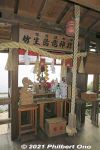
Haiden Hall has this small shrine for the Chikubushima Dragon God. 竜神拝所Jan 10, 2022
|
|
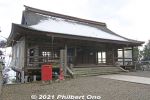
Tsukubusuma Shrine's Haiden Hall right across from the shrine. It faces the lake.Jan 10, 2022
|
|
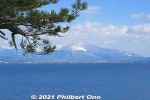
Mt. Ibuki as seen from Chikubushima.Jan 10, 2022
|
|
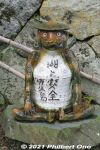
Kappa creature for water safety.Jan 10, 2022
|
|
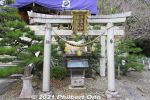
Right-side torii at Tsukubusuma Shrine .Jan 10, 2022
|
|
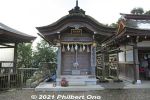
Small shrine for the White Snake God, a messenger of goddess Benzaiten. 白巳大神Jan 10, 2022
|
|
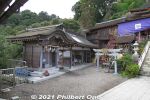
Tsukubusuma Shrine used to be part of Hogonji, but it's now legally separate from the Buddhist temple as mandated by law. Jan 10, 2022
|
|
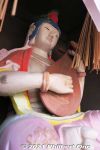
Statue of the goddess Benzaiten at Hogonji, Chikubushima. She plays the biwa lute.Jan 10, 2022
|
|
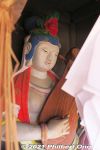
Statue of the goddess Benzaiten at Hogonji, Chikubushima. Benzaiten is the goddess of everything that flows: Water, rivers, music, etc. 弁才天Jan 10, 2022
|
|
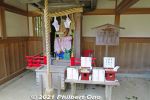
Small shrine for the goddess Benzaiten at Hogonji, Chikubushima. Benzaiten is the goddess of everything that flows: Water, rivers, music, etc. 弁才天Jan 10, 2022
|
|
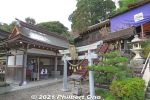
Statue of goddess Benzaiten (弁才天) or Benten in one of the smaller shrines on Chikubushima. In Japan, she is usually depicted playing the biwa lute as the goddess of music and everything else that flows such as water, ocean, lakes, and rivers. She's also revered as one of the Seven Gods of Good Fortune (七福神).Jan 10, 2022
|
|
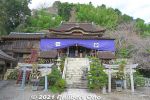
Tsukubusuma Shrine (都久夫須麻神社 National Treasure) on Chikubushima island, Nagahama, Shiga. It worships Benzaiten as well as the Dragon God and Azai-hime. Chikubushima is one of Japan's Big Three Benzaiten shrines (日本三大弁天), besiJan 10, 2022
|
|
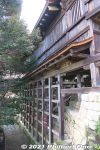
Exterior of Funa-roka boat corridor on stilts.Jan 10, 2022
|
|
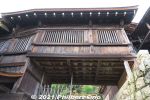
Exterior of Funa-roka boat corridor.Jan 10, 2022
|
|
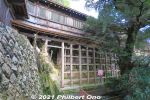
Exterior of Funa-roka boat corridor connecting Tsukubusuma Shrine and the Kannon-do Hall. Important Cultural Property. From the Momoyama Period. 船廊下Jan 10, 2022
|
|
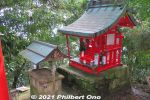
黒龍堂Jan 10, 2022
|
|
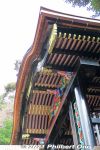
Karamon Gate roof eaves.Jan 10, 2022
|
|
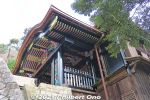
Karamon Gate (National Treasure)Jan 10, 2022
|
|
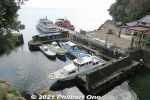
Chikubushima Port. Smaller boats are from island workers and priests. No one lives on Chikubushima. People commute by boat.Jan 10, 2022
|
|
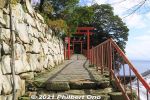
After some steps, a small torii to Tsukubusuma Shrine.Jan 10, 2022
|
|

Suggested tour route.Jan 10, 2022
|
|
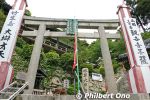
Up some steps to this torii.Jan 10, 2022
|
|
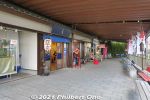
Souvenir shops on the way to the temple. There's a ticket vendor when you buy a temple admission ticket (¥300) to enter the temple grounds.Jan 10, 2022
|
|
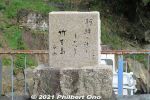
Chikubushima poetry monumentJan 10, 2022
|
|
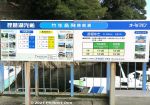
Boat departure schedule from Chikubushima. When arriving, be sure to check and remember your boat's departure time.Jan 10, 2022
|
|
|
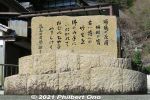
Biwako Shuko no Uta (Lake Biwa Rowing Song) monument for Verse 4 engraved on the front.Jan 10, 2022
|
|
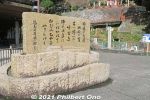
Biwako Shuko no Uta (Lake Biwa Rowing Song) monument for Verse 4. Jan 10, 2022
|
|
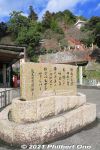
Biwako Shuko no Uta (Lake Biwa Rowing Song) monument for Verse 4. 琵琶湖就航の歌 歌碑Jan 10, 2022
|
|
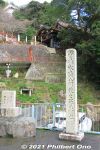
Jan 10, 2022
|
|
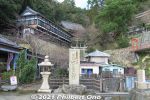
Many monuments on Chikubushima. The large building on the upper left is the quarters (本坊) for temple priests.Jan 10, 2022
|
|
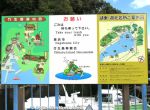
Take your trash with you.Jan 10, 2022
|
|
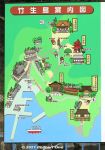
Map of Hogonji Temple. All within walking distance. Not wheelchair accessible. 1. Chikubushima: Boat dock, 2. Lake Biwa Rowing Song monument, 3. Souvenir shops, 4. Admission ticket gate (also restrooms), 5. *Tsukubusuma Shrine, 6. Haiden Hall,7. Funa-roka boat corridor, 8. *Karamon Gate, 9. Benzaiten-do Hall, 10. Three-Story Pagoda, 11. Rest house. *National Treasure.
A few buildings are for temple priests only.Jan 10, 2022
|
|
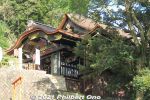
Karamon Gate (National Treasure). A closer look is shown below.Jan 10, 2022
|
|
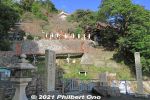
After you get off the boat at Chikubushima, you face this slope of buildings. Many monuments. On the upper right is the famous Karamon Gate.Jan 10, 2022
|
|
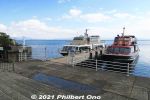
Chikubushima Port. There's another dock nearby for the boat to Imazu. 竹生島港Jan 10, 2022
|
|

Omi Marine’s red boat named “Naomasa” (after famous local samurai Ii Naomasa) goes to Hikone Port.Jan 10, 2022
|
|
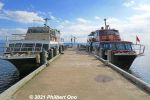
At Chikubushima Port, boat on the left is “Benten” that goes to Nagahama Port. On the right is Omi Marine’s red boat named “Naomasa” (after famous local samurai Ii Naomasa) goes to Hikone Port.Jan 10, 2022
|
|
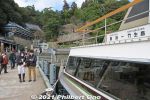
Chikubushima boat dock.Jan 10, 2022
|
|
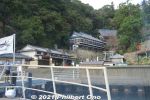
Most people spend 80 min. or 90 min. on the island before taking the return boat. Be sure to remember the departure time of your return boat especially if it's the last one for the day. (No lodging on the island.)Jan 10, 2022
|
|
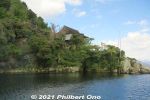
Chikubushima is also home to Tsukubusuma (Chikubushima) Shrine which is also a National Treasure. Until 1868 when Buddhist temples and Shinto shrines were required to be separate, the shrine was part of Hogonji temple.Jan 10, 2022
|
|
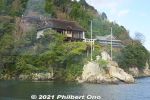
All human presence is on this south side of the island. There are no roads and no cars. There is no path to walk around the island's perimeter nor to any other side of the island. Everything is within walking distance, but there are some steps to cli(No elevators or escalators.)Jan 10, 2022
|
|
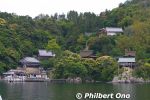
Chikubushima (竹生島) is a small, sacred island dominated by a temple/shrine complex called Hogonji (宝厳寺) perched on this fairly steep slope. The temple/shrine's construction was ordered by the emperor in 724 when he proclaimed that Chikubushima was a sacred place for the goddess Benzaiten (弁才天). The temple was to bring national peace, bountiful harvests, and prosperity to all. A priest named Gyoki (僧行基) then proceeded to build the temple with Benzaiten as the principal object of worship.Jan 10, 2022
|
|
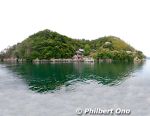
Chikubushima on Lake Biwa is home to Hogonji Temple first built in 724 as ordered by the Emperor to worship the Goddess Benzaiten. It belongs to the Shingon Buddhist Sect (Buzan School) and it is the 30th temple in the 33-Temple Pilgrimage of Saigoku.Jan 10, 2022
|
|
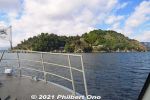
Approaching Chikubushima, Lake Biwa's most famous, historic, and sacred island. Takes about 30 min. from Nagahama Port. I've visited this island a number of times before, but this time I wanted to see something I'd never seen before.Jan 10, 2022
|
|
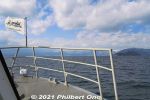
Chikubushima in sight.Jan 10, 2022
|
|

Snowy mountains around Lake Biwa.Jan 10, 2022
|
|

Snowy Mt. Ibuki as seen from Lake Biwa. Shiga's highest mountain at 1,377 meters.Jan 10, 2022
|
|

Snowy mountains all around. Mt. Ibuki can be seen on the right. It was a smooth ride.Jan 10, 2022
|
|

Snowy mountains around Lake Biwa.Jan 10, 2022
|
|
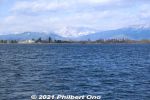
Snowy mountains around Lake Biwa.Jan 10, 2022
|
|
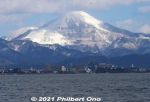
Snowy Mt. Ibuki as seen from Lake Biwa. Shiga Prefecture's highest mountain.Jan 10, 2022
|
|
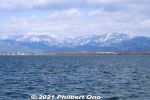
Jan 10, 2022
|
|
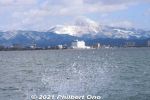
Leaving Nagahama in winter. After a major snowfall in late Jan. 2021, went on a scenic snow cruise on Lake Biwa.Jan 10, 2022
|
|

Uminoko Curry had pork cutlet and kind of sweet, mild curry. Sold only by 7-11 in Shiga for a limited time of three weeks from late Jan. 2021. Best place to eat it was on Lake Biwa.Jan 10, 2022
|
|
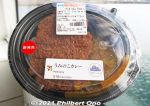
My lunch on the boat was Uminoko Curry, the same dish served on the Uminoko Floating School. Jan 10, 2022
|
|
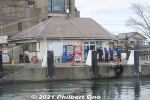
Port staff waving goodbye.Jan 10, 2022
|
|
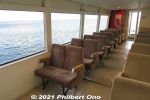
Large picture windows.Jan 10, 2022
|
|
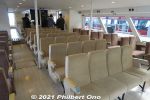
You can sit anywhere you want. Inside Benten. Very comfortable and warm in winter. Not many passengers. Easy to social distance.Jan 10, 2022
|
|
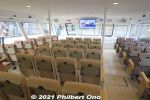
Inside the boat. Very comfortable and well heated in winter.Jan 10, 2022
|
|
| 71466 files on 284 page(s) |
 |
 |
18 |  |
 |
|